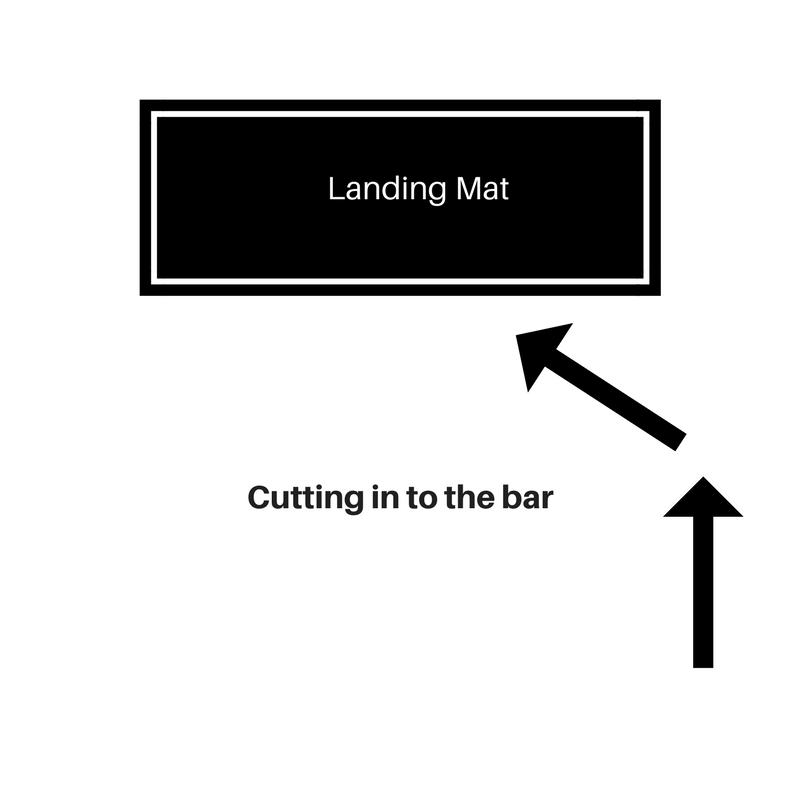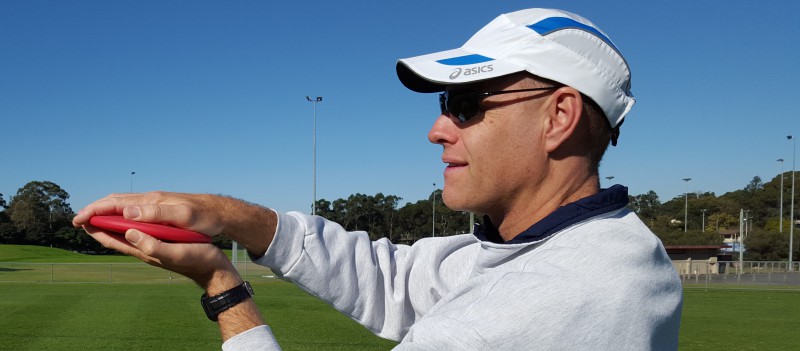4 Common High Jump Run-Up Errors That Young Athletes Make
Two keys to high jumping are to learn to use the curve effectively and to keep everything back away from the bar for as long as possible.
The approach run is the key to high jump. The approach sets up a young athlete’s flight path and, if performed properly, allows the jumper to rotate correctly in the air if they are using the “flop” technique.
A “flop” high jump approach follows a basic J-shaped curve where the first few steps of the run-up are performed in a straight line and the last few are performed on a smooth curve. The straight part of the run-up should be used to build up speed, and the curve is used to build up forces that will allow the athlete to rotate correctly over the bar.

A “flop” approach follows a J-shaped curve
An 8 to 12 stride approach is suitable for most young athletes. During the approach, young athletes should have long bouncy strides and active arms. The shoulders need to be held back and the hips held tall.
Common Run-Up Problems
Some of the biggest problems in the high jump can occur during the approach – when an athlete is still on the ground. Once an athlete leaves the ground their flight path is set. When an athlete makes a mistake over the bar, rather than look at what they did in the air, it is worth looking at what they did during their approach. Below are four common mistakes that young athletes make during a high jump run-up.
1. Cutting the curve
At the point where it’s time to begin the curve of the “J” many young athletes cut the curve and run a direct straight line to the mats. If an athlete runs straight at the bar, they will not have the curve to establish the rotation in the air that they need. High jumpers must work on avoiding this sudden change of direction in the run-up and learn to follow a smooth curve.

Error: Cutting the corner
2. Running straight at the bar
Instead of running the first few strides of the “J” absolutely straight, some young athletes start to cut in towards the mats right from the start of their run-up. This can eventually lead them to take off at a point in front of the middle of the bar, which will carry them over the far end of the bar. The ends of the bar can be 2cm higher then the middle point.

Error: Running towards the mats from the start
3. Running away from the bar
Rather than run the first few strides straight, some young athletes swing all the way out to the right (if they approach from the right side) or all the way out to the left (if they approach from the left side). This is often referred to as a “C-shaped” run-up. To then get to a point at which they can take off, they need to run a straight line towards the mats. Again, this means that there will be no curve at the end of the run-up.

Error: Swinging out to the left to make a “C Shape”
4. Leaning towards the bar
Apart from the getting the curve right, another very important part of the high jump run-up is maintaining a lean away from the bar right up to the point of take-off. For many young athletes, the bar is like a huge magnet. It is common to see young athletes drop their head or leading shoulder towards the bar prior to taking off. This will cause everything else to follow and make it much more likely that the athlete will hit the bar. Young athletes should work on staying back away from the bar for as long as they possibly can.
Summary
- Run a smooth curve.
- Run the first few strides straight.
- Run a “J”, not a “C”.
- Lean away from the bar.
Can you add to the list?
What do you think are some of the keys to a high jump run-up? What are some common errors young athletes make? Let me know by leaving a reply/comment or by using the contact details below.
Further reading
The Flop High Jump Run-Up Guidebook by Coaching Young Athletes
If this post helped you please take a moment to help others by sharing it on social media. If you want to learn more I encourage you to leave questions and comments or contact me directly.
Darren Wensor is a sports development professional, coach educator, specialist coach of young athletes, and founder of the blog coachingyoungathletes.com. Learn more about him here and connect with him on Twitter, Facebook, Linkedin, or via email. Check out Coaching Young Athletes on YouTube, the Coaching Young Athletes podcast, and the Coaching Young Athletes E-Book Series.


Another great article Darren. Another error young athletes make is slowing down during the curve. As you said above, the straight run builds speed and this needs to be maintained or increased through the curve. A lot of young athletes start shuffling their feet when they try and run the curve. Could you do an article that covers various ways to mark out a high jump run up? The method I coach was taught to me when I was a little athlete many years ago. Would really like to learn some other methods. Thanks again for these articles.
LikeLike
Thanks for your comments Stuart. You have identified another common run-up problem. I have been considering an article about how to measure a high jump run-up for a while. I will put it on the list to get done.
LikeLike
Hi Darren, I agree.
What is your opinion on the angle of the foot at take-off with relation to the cross bar?
LikeLike
Check out my article https://coachingyoungathletes.com/2018/07/09/how-to-best-plant-the-foot-in-high-jump/
LikeLike